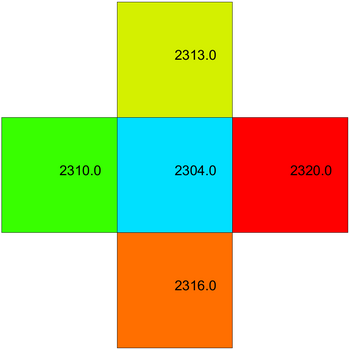Template:Clean Dams Tool: Difference between revisions
From XMS Wiki
Jump to navigationJump to search
(Created page with "__NOINDEX__ __NOTOC__ ===Clean Dams=== Given an elevation dataset, runs cleandam.exe to remove digital dams, which are depressions where the cell elevation is lower than its four neighbor cells. If a GSSHA boundary conditions coverage containing a stream network is provided, the cells where the streams intersect the grid are not altered. For more information on cleandam.exe, refer to the GSSHA Wiki. ====Input Parameters==== *''Input dataset'' – A dataset on the UG...") |
|||
| (2 intermediate revisions by the same user not shown) | |||
| Line 3: | Line 3: | ||
===Clean Dams=== | ===Clean Dams=== | ||
Given an elevation dataset, runs cleandam.exe to remove digital dams, which are depressions where the cell elevation is lower than its four neighbor cells. If a GSSHA boundary conditions coverage containing a stream network is provided, the cells where the streams intersect the grid are not altered. For more information on cleandam.exe, refer to the GSSHA Wiki. | Given an elevation dataset, runs cleandam.exe to remove digital dams, which are depressions where the cell elevation is lower than its four neighbor cells. If a GSSHA boundary conditions coverage containing a stream network is provided, the cells where the streams intersect the grid are not altered. For more information on cleandam.exe, refer to the GSSHA Wiki. | ||
:[[File:Digital dam.png|thumb|none|350 px|Digital dam example]] | |||
====Input Parameters==== | ====Input Parameters==== | ||
*''Input dataset'' – A dataset on the UGrid representing cell-based elevations. | *''Input dataset'' – A dataset on the UGrid representing cell-based elevations. | ||
*''Input GSSHA Boundary Conditions coverage | *''Input GSSHA Boundary Conditions coverage'' – The coverage containing the stream network. Optional. If provided, cells intersected by streams are not altered. | ||
*''Clean flat areas'' – Input option to cleandam.exe | *''Clean flat areas'' – Input option to cleandam.exe | ||
*''Clean digital dams'' – Input option to cleandam.exe | *''Clean digital dams'' – Input option to cleandam.exe | ||
*''Fill leftover problems'' – Input option to cleandam.exe | *''Fill leftover problems'' – Input option to cleandam.exe | ||
*''Output dataset name'' – Name of the new elevation dataset created by cleandam.exe | *''Output dataset name'' – Name of the new elevation dataset created by cleandam.exe | ||
====Output Parameters==== | ====Output Parameters==== | ||
*''Dataset'' – The new dataset created by cleandam.exe | *''Dataset'' – The new dataset created by cleandam.exe | ||
| Line 16: | Line 17: | ||
GSSHA | Clean Dams | GSSHA | Clean Dams | ||
{{-}} | {{-}} | ||
<noinclude>[[Category:Toolbox | <noinclude>[[Category:Toolbox]]</noinclude> | ||
Latest revision as of 22:38, 16 April 2024
Clean Dams
Given an elevation dataset, runs cleandam.exe to remove digital dams, which are depressions where the cell elevation is lower than its four neighbor cells. If a GSSHA boundary conditions coverage containing a stream network is provided, the cells where the streams intersect the grid are not altered. For more information on cleandam.exe, refer to the GSSHA Wiki.
Input Parameters
- Input dataset – A dataset on the UGrid representing cell-based elevations.
- Input GSSHA Boundary Conditions coverage – The coverage containing the stream network. Optional. If provided, cells intersected by streams are not altered.
- Clean flat areas – Input option to cleandam.exe
- Clean digital dams – Input option to cleandam.exe
- Fill leftover problems – Input option to cleandam.exe
- Output dataset name – Name of the new elevation dataset created by cleandam.exe
Output Parameters
- Dataset – The new dataset created by cleandam.exe
Current Location in Toolbox
GSSHA | Clean Dams
